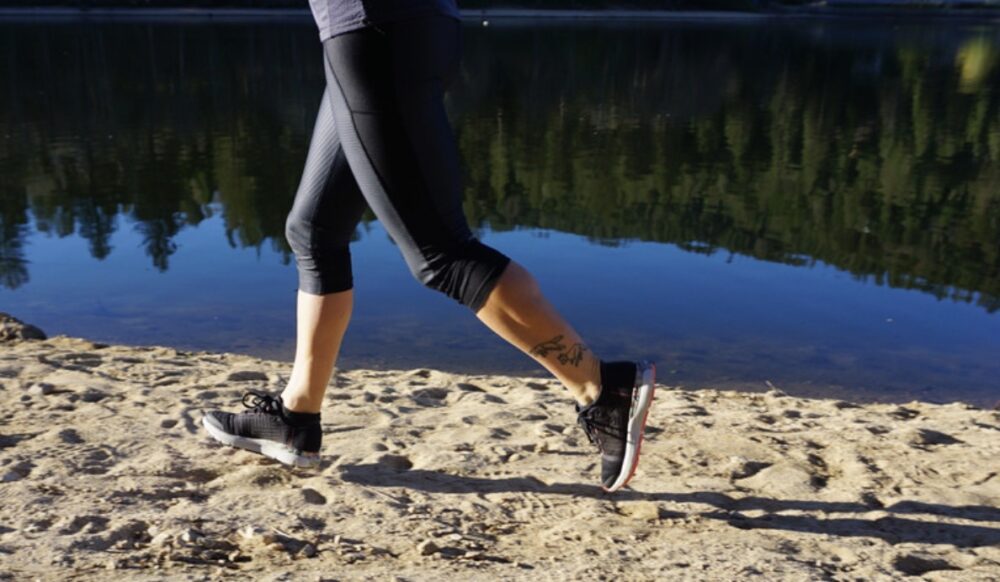Welcome to another week of the Habits of Highly Effective Athletes series—this time, we’re all about cross-training for cyclists, runners and other endurance athletes! Hopefully you’ve enjoyed reading about staying in your own lane, fueling properly, and sleeping enough (and right). Today, we’re going to talk about another one that seems like it would be obvious, but from what I’ve seen in years of my own training and racing, coaching, interviewing tons of athletes and experts and traveling with some of the best in the world, I can safely say that just because it’s obvious doesn’t mean it’s actually happening. So let’s talk all about cross-training, shall we?
First up… What is cross-training?
For our intents and purposes here, it’s any kind of training outside of your specific sport that will ultimately surve you in your sport of choice. So for a mountain biker, for instance, cross-training could be running for aerobic gains, strength training for strength gains, yoga for mobility gains and BMXing for technical skill gains. It helps you become a better all-around athlete, makes you more time-efficient, and less prone to injury. It also helps avoid time away from training altogether when weather or circumstances don’t allow it.
Before we dive into this habit more, have you read about the first three?
- Habits of Highly Effective Athletes: Stay In Your Lane
-
- Habits of Highly Effective Athletes: Fuel For the Work You Do & The Life You Live
- Habits of Highly Effective Athletes: Sleeping for Recovery and Better Workouts
- Habits of Highly Effective Athletes: Cross-Train… But Not Too Much
- Habits of Highly Effective Athletes: Practice Sport-Specific Technique & Skills
- Habits of Highly Effective Athletes: Measure to Manage
Cross-training isn’t just for the off-season
Great athletes know that cross-training isn’t reserved for the off-season. Sure, that’s when you can really ramp up cross-training… For instance, a mountain biker might be cross-country skiing regularly in the off-season, but only doing strength training and yoga as cross-training during the season. But all of the best athletes that I’ve met are still hitting cross-training during all but the craziest competition times.
Cross-training can and should be varied and fun
I know a lot of great athletes who love strength training, and I know plenty who hate it. Rather than sticking to something that they can’t stand, the successful ones skip the more standard gym days in favor of bodyweight training for 15 minutes most days of the week. The same goes for yoga: Some racers love it, some can’t stand to stay in a class for a full hour. (Personally, I think that reflects more on the class than the athlete, but that’s another story.) Instead, they do 15 minutes per day of a quick yoga flow or just some stretching while they watch Netflix. I’ve spent a lot of time at training camps, and I noticed that the racers who went on to do the best during the season, and generally avoided injury during the season, were the ones who were adding extra workouts to their routine, even if it meant dropping their in-sport hours slightly.
The problem athletes have with cross-training
The number one problem I’ve seen A LOT with athletes is that they start cross-training… and then go way overboard. The number of cyclists I see picking up running in-season or during the off-season is constantly growing, which is great because it means there’s an understanding of the value of cross-training. Sometimes, cycling just isn’t possible, while running is a simple, efficient way to sneak in a workout, plus do a bit of pounding on the bones to improve that bone density. But the problem is that 90% of cyclists I know who pick up running go HAM on it immediately. We’re talking hill repeats, 90 minute runs, just insane speed/volume all at once. The cardio and aerobic system is there, but the body isn’t actually ready to run. So then, by Day 2, the cyclist-turned-runner is sore, possibly injured, certainly not thrilled, and either quits, or for some reason, doubles down and goes even harder.
Yeah, I know. Sounds silly when I write it out. But I’ve been there and done that a whole bunch of times myself, even though I know better.
So yes, cross-train. But be smart. Steadily and slowly build up to it, and don’t assume you’ll be amazing at lifting weights or running marathons because you can pedal your bike hard. Enlist a coach or trainer to help you or give you some pointers, especially when it comes to sports or strength training that is new to you.
(I had to deal with this during the winter, learning how to cross-country ski. As a runner, I was super frustrated to not be speeding along and feeling the burn, but thankfully, it’s technique-based enough that I didn’t have any choice other than to pace myself and get help. Now, it’s one of my favorite activities!)
Before you go… want a free 7-day guide to healthy habit change? Sign up here!





